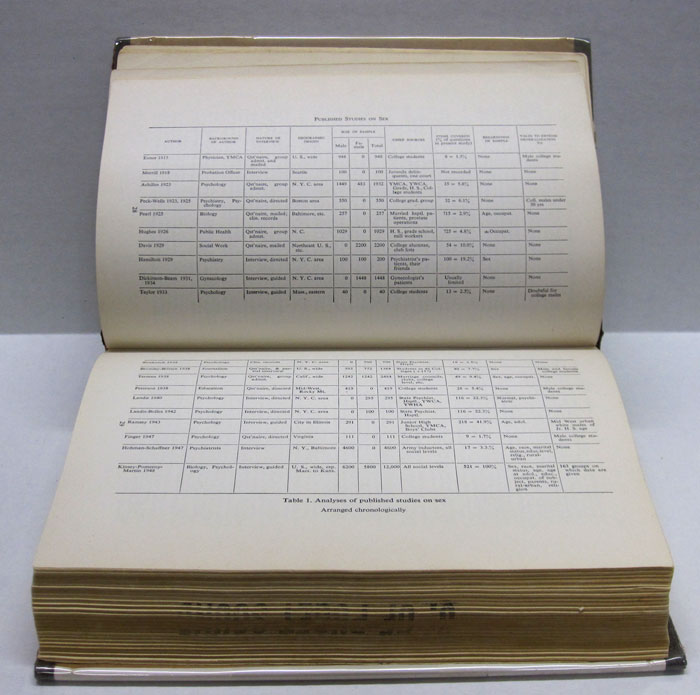1948: Sexual Behavior in the Human Male
Author/Editor: Alfred C. Kinsey, Wardell Baxter Pomeroy, & Clyde E. Martin
Find it in Collins Library!

This was the first of the Kinsey Reports, and was followed in 1953 by Sexual Behavior in the Human Female. The Reports were extraordinarily important in their role as one of the first statistical descriptions of human sexual behavior as it is, rather than as an author thought it should be.
Not surprisingly, the results were controversial. In fact, the results still ignite criticism—some based on the changes and improvements in sampling and statistical work, and others on moral grounds, just as they did when it was first published. Joseph Fulsom, for example, astutely characterized that strand of objection in as follows, in 1954:
“Maybe it’s true, but it’s not good policy to broadcast detailed truth without some consideration of how people are going to use it.”
Apart from making it clear that America sexual behavior didn’t conform to prescribed behaviors, another legacy from Kinsey’s work is the sexual orientation scale, rejecting the concept of a binary sexuality. For these reasons, Kinsey’s work is exceptionally important.




























